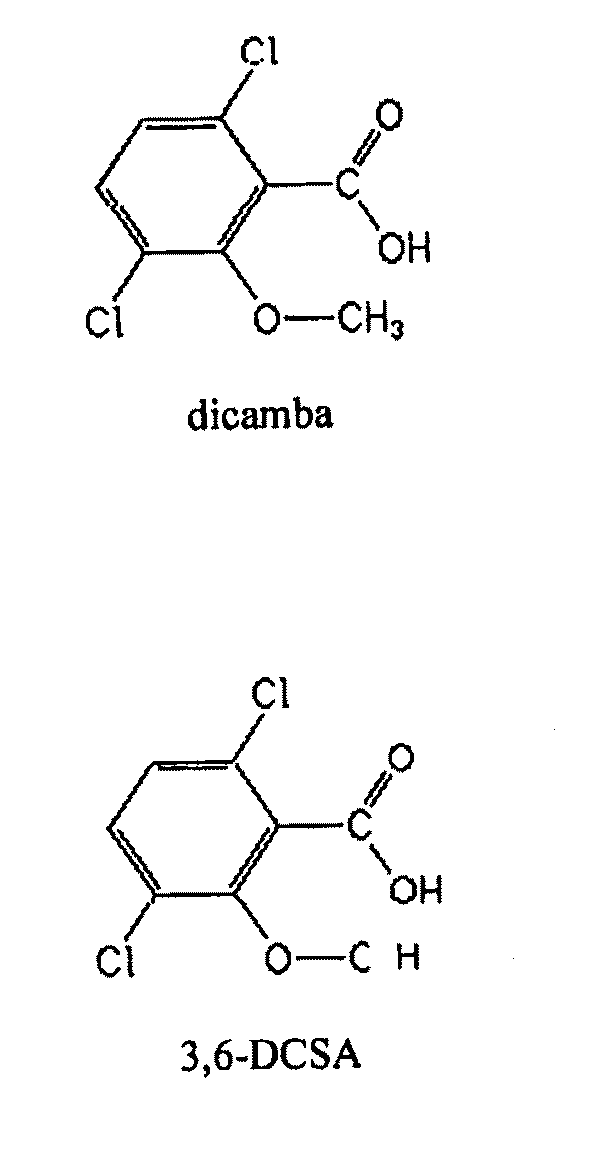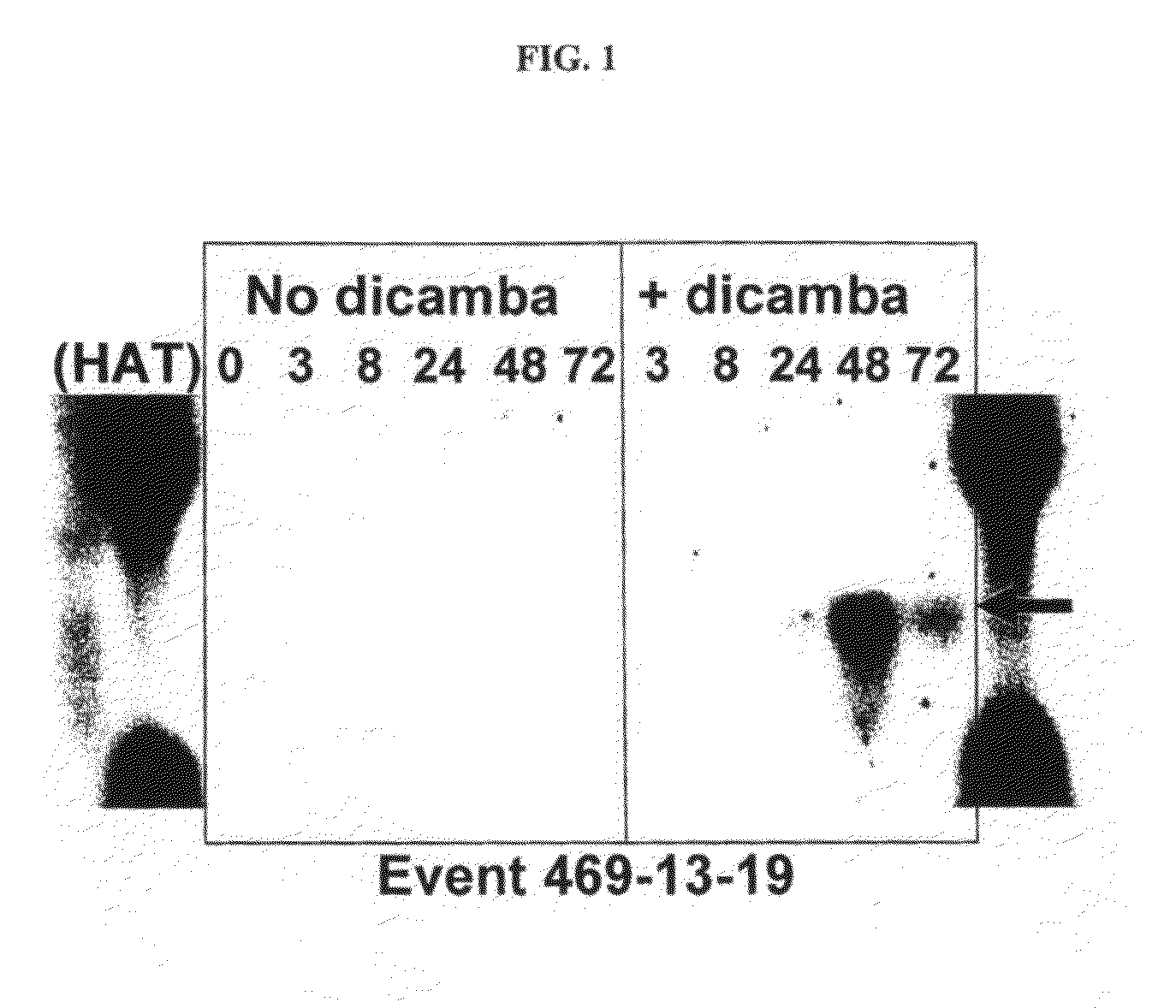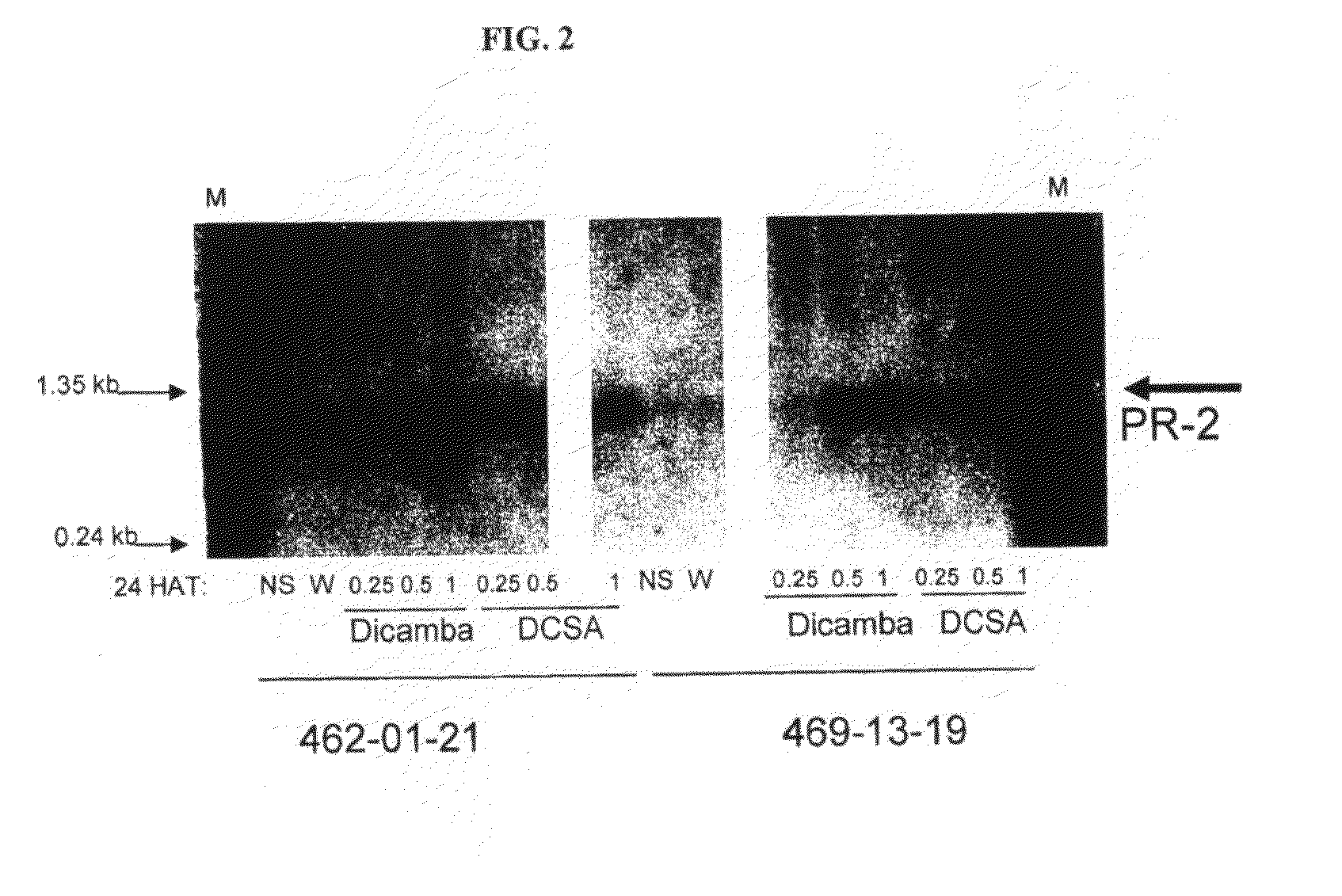Methods and Compositions for Improving Plant Health
a technology of compositions and methods, applied in the field of agriculture, can solve problems such as plant stunting symptoms, and achieve the effects of improving the health of plants
- Summary
- Abstract
- Description
- Claims
- Application Information
AI Technical Summary
Benefits of technology
Problems solved by technology
Method used
Image
Examples
example 1
Production of Transgenic Soybean Containing a DMO Gene
[0089]Transgenic soybean plants comprising a DMO-encoding transgene were obtained by Agrobacterium-mediated transformation of soybean tissue from cultivars Thome, NE3001, and A3525, using standard procedures (e.g. U.S. Pat. No. 6,384,301, U.S. Pat. No. 7,002,058 or Zhang et al., 1999) with a binary vector containing a DMO-encoding polynucleotide which encodes the polypeptide of SEQ ID NO:1.
example 2
Induction of a Pathogen Related Protein Involved in Disease Resistance by Dicamba and DCSA
[0090]Transgenic and control soybean seeds (cultivars Thorne, NE3001, A3525) were planted into 3.5-inch square plastic pots containing Redi-earth™ (Scotts-Sierra Horticultural Products Co., Marysville, Ohio). The pots were placed on capillary matting in 35 inch×60 inch fiberglass watering trays for overhead and / or sub-irrigation for the duration of the test period so as to maintain optimum soil moisture for plant growth and were fertilized with Osmocote® (14-14-14 slow release; Scotts-Sierra Horticultural Products Co., Marysville, Ohio) at the rate of 100 gm / cu.ft. to sustain plant growth for the duration of greenhouse trials.
[0091]The plants were grown in greenhouses at 29° / 21° C. day / night temperature with relative humidity between 15%-50% to simulate warm season growing conditions of late spring. A 14 hour minimum photoperiod was provided with supplemental light at about 600 μE (micro-Einste...
example 3
DCSA Provides Fungal Disease Resistance
[0099]Ten-day old Roundup Ready® Flex Cotton (Event MON 88913; U.S. Publ. 20060059590) seedlings were sprayed with a mixture of Roundup Weather Max® (Monsanto, St. Louis, Mo.) and 3,6-DCSA (BASF). The control plants were sprayed with water only. The cotton seedlings from both treatments were inoculated with Pythium ultimum by dipping seedling into inoculum slurry, 24 hours after the spray application. The positive control plants were neither sprayed nor inoculated with P. ultimum. As shown in FIG. 3, the cotton seedlings inoculated with P. ultimum but that did not receive application of a mixture of Roundup Weather Max® (Monsanto, St. Louis, Mo.) and 3,6-DCSA died as a result of P. ultimum infection within 10 days after inoculation. However, infection by P. ultimum was not established in the plants that received a mixture of Roundup Weather Max® (Monsanto, St. Louis, Mo.) and 3,6-DCSA. Cotton plants treated with Roundup® and DCSA were as health...
PUM
| Property | Measurement | Unit |
|---|---|---|
| air pressure | aaaaa | aaaaa |
| height | aaaaa | aaaaa |
| temperature | aaaaa | aaaaa |
Abstract
Description
Claims
Application Information
 Login to View More
Login to View More - R&D
- Intellectual Property
- Life Sciences
- Materials
- Tech Scout
- Unparalleled Data Quality
- Higher Quality Content
- 60% Fewer Hallucinations
Browse by: Latest US Patents, China's latest patents, Technical Efficacy Thesaurus, Application Domain, Technology Topic, Popular Technical Reports.
© 2025 PatSnap. All rights reserved.Legal|Privacy policy|Modern Slavery Act Transparency Statement|Sitemap|About US| Contact US: help@patsnap.com



